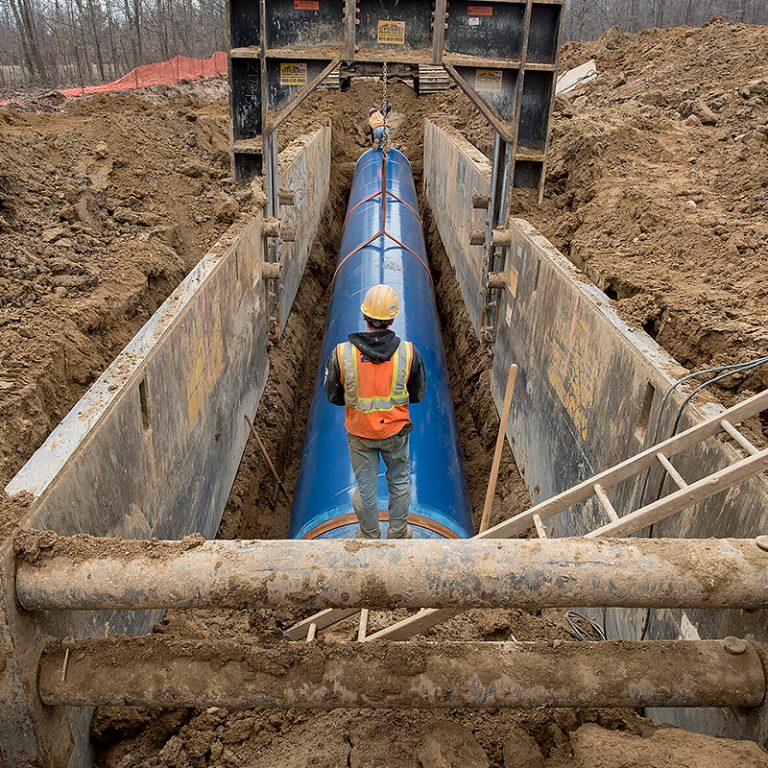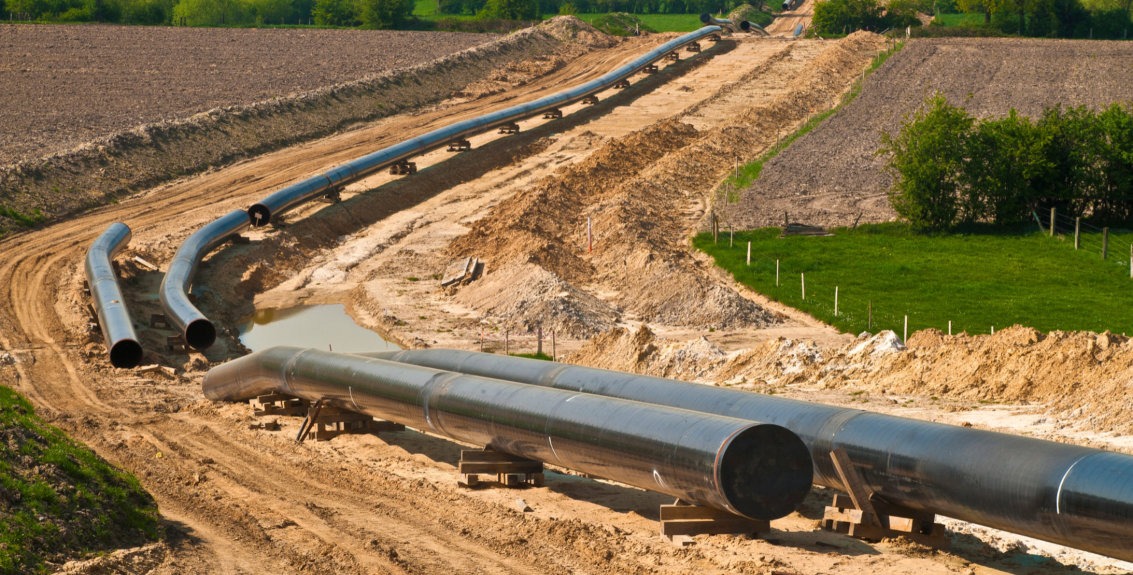Going Green With Creek Pipe HDPE installation Techniques
Wiki Article
Comprehending the Essentials of Pipes Installation: What You Required to Find Out About the Refine
Proper pipe installation is necessary for any type of pipes system. It calls for mindful factor to consider of different elements, consisting of product choice and adherence to local regulations. A tactical format can protect against concerns like pressure loss, while the right devices guarantee efficient signing up with techniques. However, also experienced installers can make typical mistakes. Comprehending these essentials can result in an extra effective and durable system, prompting a better look at the key elements associated with the process.Picking the Right Products for Pipe Installation
When thinking about pipe installation, the option of proper products is crucial to guaranteeing resilience and capability. Various products are readily available, each offering one-of-a-kind advantages and considerations. As an example, PVC pipelines are lightweight, resistant to corrosion, and cost-effective, making them perfect for domestic pipes. On the other hand, copper pipes, recognized for their long life and ability to stand up to heats, are commonly chosen for home heating systems.Additionally, galvanized steel pipelines offer stamina and sturdiness, suitable for heavy-duty applications, although they are at risk to corrosion over time.For underground installations, polyethylene pipes are favored as a result of their flexibility and resistance to stress and anxiety splitting. Correct product option relies on the details demands of the project, including stress scores, temperature variations, and the chemical nature of the fluids being transported - Creek Pipe HDPE installation. Eventually, notified options regarding pipe materials add greatly to the total success and longevity of pipes systemsUnderstanding Local Building Ordinance and Rules
How can understanding local building ordinance and guidelines effect pipe installation? Familiarity with these codes is crucial for making certain that pipe installments are secure, compliant, and effective. Local building regulations describe specific demands pertaining to materials, installation techniques, and safety and security actions, which need to be followed in order to stay clear of possible legal issues and costly fines.Failure to comply can cause assessments being fallen short, hold-ups in task completion, or perhaps mandated elimination of poorly mounted pipes. Furthermore, recognizing zoning regulations and laws can affect the kind of materials allowed, in addition to the methods made use of for installation.Contractors and home owners alike should spend time in evaluating regional guidelines before commencing any type of installation project. This aggressive strategy not only promotes safety yet additionally enhances the overall quality and resilience of the pipes system, eventually fostering lasting functionality and satisfaction.Preparation Your Pipe Design and Style
Proper preparation of pipe format and layout is necessary for attaining a reliable pipes system. This procedure starts with evaluating the details requirements of the room, taking into consideration the location of components and appliances. Precise dimensions ensure that pipes are properly directed, lessening bends and transforms that can cause pressure loss.Consideration of the flow rates and the types of materials utilized is essential, as different materials have differing resilience and compatibility with pipes systems. In addition, the designer must make up future developments or alterations to the design, permitting adaptability in situation of renovations.Efficient drainage and ventilation are additionally considerable parts of the style, as they avoid obstructions and assure proper waste removal. Partnership with neighborhood structure codes ensures compliance and safety, which is extremely important in any pipes installation task.Necessary Tools and Devices for Installation
Successful pipe installation rests on having the right tools and tools handy. Crucial tools include pipe cutters for clean cuts, wrenches for tightening installations, and pliers for clutching and transforming pipelines. Furthermore, a degree warranties pipes are set up uniformly, while a determining tape help in attaining precise lengths.For particular products, a soldering iron may be essential for copper pipelines, while a PVC cutter is crucial for plastic choices. Safety and security tools, such as gloves and goggles, protects installers from possible threats throughout the process.A pipe bender can be specifically helpful for producing smooth curves without compromising integrity, while a torque wrench guarantees that connections are secured to the producer's specifications.Having these devices readily offered not just facilitates a smoother installation process but also contributes to the total resilience and functionality of the pipes system. Correct tools is essential in attaining resilient results.Techniques for Correct Pipe Signing Up With and Securing
Achieving a secure and leak-free link between pipes requires mindful interest to joining and securing methods. Different techniques exist, each fit to different pipe products and applications (Creek Pipe trenching services). Welding is typically employed for steel pipes, guaranteeing durable connections with warm combination. On the other hand, plastic pipelines benefit from solvent cement or fusion welding, developing solid, permanent bonds.Threaded links are common in both steel and plastic piping, calling for exact positioning and making use of appropriate sealers, such as Teflon tape or pipe dope, to prevent leaks. Compression fittings supply another option, where mechanical stress secures the pipelines together, making them easily took apart for maintenance.Regardless of the approach chosen, correct prep work is essential. This includes cleansing pipe finishes and ensuring they are without debris. Carrying out these strategies diligently will improve the durability and reliability of the pipe system, eventually adding to its reliable performanceCommon Errors to Stay Clear Of During Installation
During pipe installation, preventing typical blunders is vital for making certain a reputable and effective system. One regular mistake is falling short to measure and cut pipes accurately, which can cause incorrect installations and leakages. In addition, neglecting to check the compatibility of materials can lead to corrosion or other damages in time. Improperly safeguarding joints and connections can likewise create powerlessness in the system, creating possible failures.Another typical mistake is overlooking the significance of slope and water drainage; pipes need to be mounted at the correct angle to promote appropriate circulation. Poor assistance for pipes can cause drooping and tension, influencing the integrity of the system. Inevitably, disregarding local codes and laws can lead to pricey rework and security dangers. By being aware of these risks, installers can substantially improve the longevity and efficiency of pipe systems.Upkeep Tips for Lasting Pipe Equipments
To guarantee the long life of pipe systems, routine inspections and cleaning are essential methods. These actions assist identify prospective concerns before they intensify right into major troubles. Additionally, utilizing correct insulation techniques can even more protect pipes from temperature level variations and environmental factors.Routine Inspections and Cleaning Up
Regular assessments and cleaning are crucial for keeping the durability and effectiveness of pipe systems. Regularly analyzing pipelines for signs of rust, leakages, or clogs can help identify prospective concerns before they intensify right into expensive repair work. Cleansing pipelines periodically removes buildup that can restrict flow and promote degeneration. It is suggested to set up examinations at the very least annually, but much more frequent checks may be required in high-usage environments. Using expert services for complete cleansing assurances that all debris is effectively removed. Furthermore, keeping records of examinations and upkeep tasks help in tracking the system's health and wellness in time - Creek Pipe Texas oilfield. By prioritizing these practices, residential property owners can enhance the reliability and life-span of their pipe systemsAppropriate Insulation Methods
Effective insulation strategies play an essential duty in preserving the efficiency and long life of pipe systems. Correct insulation reduces heat loss in warm water pipes and avoids freezing in cool water pipes, substantially minimizing energy expenses and prospective damage. Typical products utilized for insulation consist of fiberglass, foam, and rubber, each offering differing levels of thermal resistance. It is crucial to guarantee that insulation is used uniformly, covering all exposed areas without spaces. Furthermore, securing insulation with ideal fasteners assists keep its position and effectiveness in time. Routine evaluations must be performed to identify damage, ensuring prompt replacements. By carrying out these strategies, pipe systems can operate effectively and have an extensive life span, inevitably benefiting both the setting and the property owner.
Regularly Asked Inquiries
How Do I Identify the Appropriate Pipe Dimension for My Project?
Identifying the suitable pipe dimension includes reviewing the project's flow requirements, pressure specifications, and the type of liquid being transferred. Consulting style requirements and carrying out computations assurances perfect performance and effectiveness in the installation process.What Are the Environmental Impacts of Different Pipe Materials?

Can I Install Pipes Myself or Should I Work with a Specialist?
The inquiry of whether to mount pipelines individually or work with an expert frequently depends on the person's ability level and project intricacy. A specialist might ensure compliance with laws and minimize potential long-lasting concerns.
How Much Time Can I Anticipate My Pipe Installation to Last?
The long life of pipe installation differs significantly, commonly lasting 20 to 100 years, depending upon products, installation high quality, and maintenance. Regular evaluations and proper care can improve toughness and stop premature failures.
What Are the Signs of a Failing Pipe System?
Indications of a stopping working pipe system include frequent leakages, uncommon water pressure modifications, stained water, mold growth, and Creek Pipe Company relentless dampness. House owners must monitor these signs to prevent costly damage and assurance prompt repair services are made.Report this wiki page